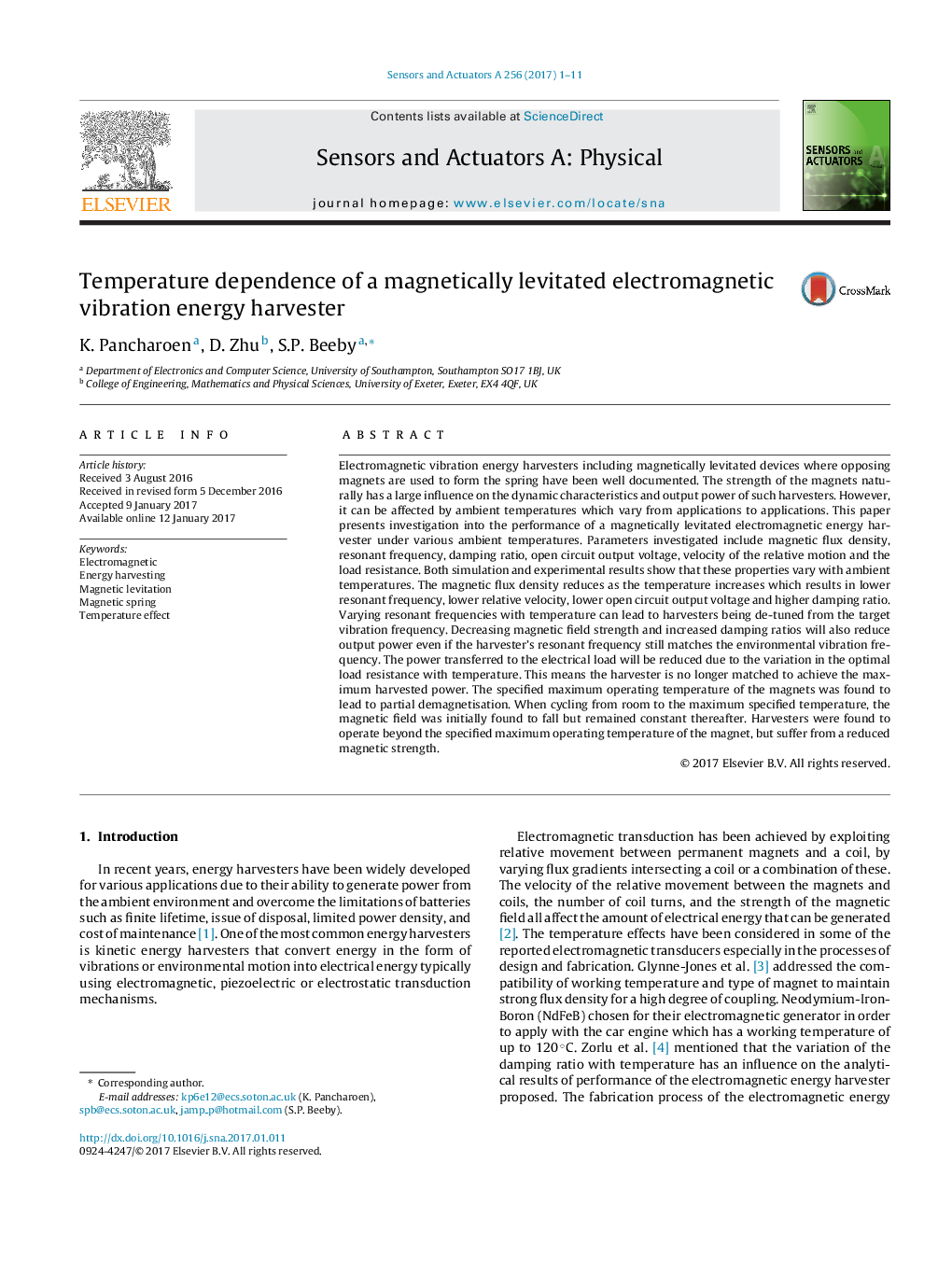| کد مقاله | کد نشریه | سال انتشار | مقاله انگلیسی | نسخه تمام متن |
|---|---|---|---|---|
| 5008397 | 1461844 | 2017 | 11 صفحه PDF | دانلود رایگان |
- The effect of temperature variations on a magnetically levitated electromagnetic energy harvester is investigated for the first time.
- Parameters investigated include magnetic flux density, resonant frequency, damping ratio, quality factor and output voltage.
- Experimental and simulation results are presented and discussed.
Electromagnetic vibration energy harvesters including magnetically levitated devices where opposing magnets are used to form the spring have been well documented. The strength of the magnets naturally has a large influence on the dynamic characteristics and output power of such harvesters. However, it can be affected by ambient temperatures which vary from applications to applications. This paper presents investigation into the performance of a magnetically levitated electromagnetic energy harvester under various ambient temperatures. Parameters investigated include magnetic flux density, resonant frequency, damping ratio, open circuit output voltage, velocity of the relative motion and the load resistance. Both simulation and experimental results show that these properties vary with ambient temperatures. The magnetic flux density reduces as the temperature increases which results in lower resonant frequency, lower relative velocity, lower open circuit output voltage and higher damping ratio. Varying resonant frequencies with temperature can lead to harvesters being de-tuned from the target vibration frequency. Decreasing magnetic field strength and increased damping ratios will also reduce output power even if the harvester's resonant frequency still matches the environmental vibration frequency. The power transferred to the electrical load will be reduced due to the variation in the optimal load resistance with temperature. This means the harvester is no longer matched to achieve the maximum harvested power. The specified maximum operating temperature of the magnets was found to lead to partial demagnetisation. When cycling from room to the maximum specified temperature, the magnetic field was initially found to fall but remained constant thereafter. Harvesters were found to operate beyond the specified maximum operating temperature of the magnet, but suffer from a reduced magnetic strength.
Journal: Sensors and Actuators A: Physical - Volume 256, 1 April 2017, Pages 1-11
